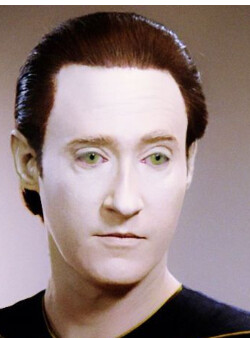Pick the right parents. First choice would be sub-saharan african, second choice would be southeast asian, last choice would be northwest european. Some people have built-in SPF 30 combined with a very thick layer of collagen and very dense, prominent facial bones. These are the best facial agers.
Use a sunscreen with high UVA protection in 380-400 nm. Currently that’s only Anthelios UVmune. It’s not cheap. Affordable alternatives would be Riemann P20 and Gruume. They have very high UVA protection, too, but not as high in 380-400 nm. The longer UV rays penetrate to the dermis and contribute the most towards skin aging. Reapply and avoid exposure on high UV index days. Also wear a hat/visor and sunglasses.
Use tretinoin or tazarotene as often as you can stand it. There is a 30-fold (or maybe more) variation in what people tolerate so it will take some experimentation to find a routine that works for you. Most people use a moisturizer on top (or make a moisturizer sandwich with tret in the middle).
Just about any other regular use topical will pale in comparison to a good sunscreen and rx retinoid so don’t expect much. Everyone wants to make a buck and academicians need to publish so there is a ton of junk out there that that doesn’t do much but is highly touted.
Don’t make babies. During pregnancy, there is upregulation of the matrix metalloproteinases that break down collagen so as to accommodate the growing fetus. This process takes place all over the body and is more evident in north european women who have many children. Also, if calcium intake is not adequate, the fetus will take it from the mother’s bones.
Maintain a stable, healthy body weight throughout life. Don’t lose or gain too much.I don’t think there is any clinical reason why people should have to gain weight after early adulthood unless they are far too thin.
Don’t eat highly processed/refined foods. I eat a whole foods, plant-based diet. My biggest meal of the day is an enormous salad with the rainbow of colors. I can tell that people over 35 don’t eat like I do by looking at them.
When you reach a certain age you might want to make judicious use of fillers (only very sparingly) and botox.
Exercise. You need to include both cardio and resistance training. No need to go crazy but it won’t be the same if you skip these.
Take HRT when you can. There is accelerated bone loss in the first five years of menopause. You will want to do everything you can to minimize these accelerated losses.
Somewhere between your late 40s and early 50s (for most women) you might want your first facelift. No matter how pristine your skin surface is, you will have started losing bone and no feasible amount of collagen production in your dermis, injected fat, filler, or biostimulator will truly correct for that. You will continue to lose bone as you age and if you have money you will want to get another every 7-10 years. The second one is harder to pull off, no matter how talented the surgeon, and by the third or fourth you will be entering uncanny valley no matter how talented your surgeon is. I was advised to wait as long as possible and to get only one good one. But you don’t want to wait too long. Do it while you still have good elasticity for the best, longest-lasting results. Randal Haworth proposes another trajectory: midface lift in mid 40s, full high SMAS facelift in early-mid 50s, one and only one revision 7-10 years later.
Regarding procedures like lasers, stronger peels, RF, ulthera, etc. my suggestion is don’t. They do build collagen but it’s in response to a controlled wound. The new collagen is not in the same proportion of subtypes and most of these damaging mechanisms don’t build elastin as well. The new collagen fiber bundles have smaller diameter and lower tensile strength than the collagen of the original skin. Better not to wound it in the first place. Prevention is always better than the “cure” which goes back to using the best sunscreen available as often as you can. I’ve learned the hard way. If you feel that you must do something, try periodic shallow microneedling with a skin booster. Some people meso with boosters, too, it increases luminance and reflectance of the skin surface but it’s a temporary fix.
